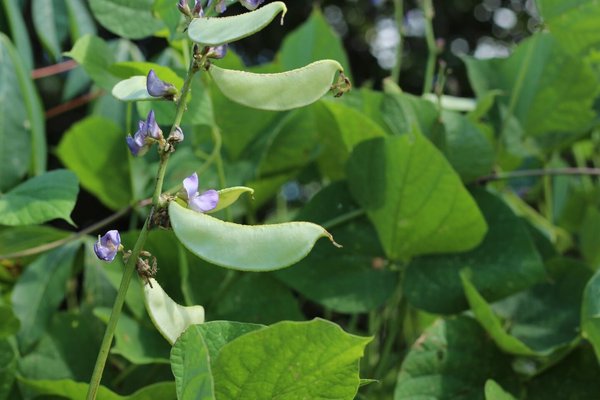 Read this article in French
Read this article in French- Share this article
- Subscribe to our newsletter
New bean genome unveils potential of resilience in drought-prone regions
An international team of researchers, led by Africans, has fully sequenced the genome of a climate resilient bean that could bolster food security in drought-prone regions. The sequencing of the hyacinth bean or ‘lablab bean’ [Lablab purpureus] paves the way for wider cultivation of the crop, bringing nutritional and economic benefits, as well as much needed diversity, to the global food system.
The results were published in Nature Communications in April 2023.
The plant is native to Africa and is cultivated throughout the tropics producing highly nutritious beans, which are used for food and livestock feed. It is extremely drought-resilient and thrives in a range of environments and conditions, contributing to food and economic security, and improving soil fertility by fixing nitrogen. Lablab is also used medicinally in some areas and contains bioactive compounds with pharmacological potential.
Diversifying the global food system
The lablab bean is one of a long list of ‘orphan crops’ – indigenous species that play an important role in local nutrition and livelihoods but receive little attention from breeders and researchers.
The three major crops that currently provide over 40 per cent of global calorie intake – wheat, rice, and corn – receive the bulk of breeding and crop improvement efforts. With so little diversity in crop cultivation, the global food system is vulnerable to environmental and social instabilities.
Underutilised crops like lablab hold the key to diversified and climate-resilient food systems and genome-assisted breeding is one promising strategy to improve their productivity and adoption.
Oluwaseyi Shorinola, one of the study’s lead authors from the International Livestock Research Institute (ILRI), in Nairobi, Kenya, and a visiting scientist at the John Innes Centre in the United Kingdom, said: “The first green revolution was achieved with major crops like wheat and rice. Orphan crops like lablab could pave the way for the next green revolution.”
African-led research
The research process itself was ground-breaking not only for its inclusivity but also for its leadership by African scientists. “Although many African indigenous crops have been sequenced in the past few years, in most of that work, African scientists have been underrepresented, and when we’ve been involved we have been in the back seat,” said Meki Shehabu, another co-author of the study and a scientist at ILRI in Ethiopia. “What makes this project special is that it is led by African scientists, in collaboration with scientists from international institutes.”
(CGIAR/wi)
Reference





Add a comment
Be the First to Comment